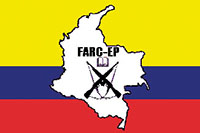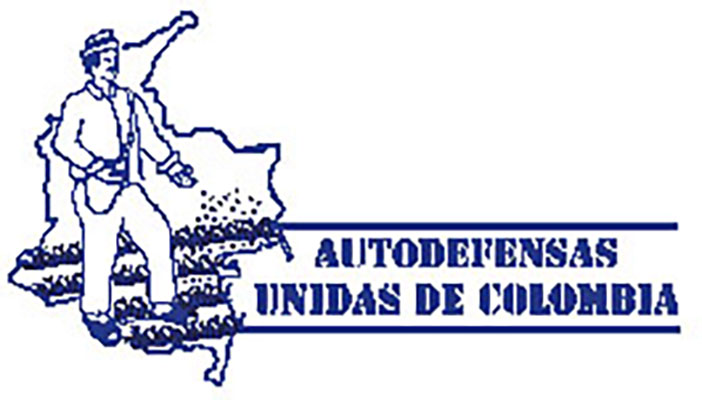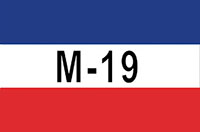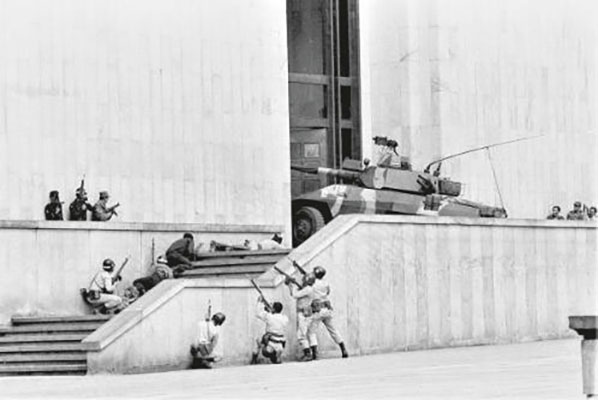SIDEBAR
DOWNLOAD
For more than forty years, the government of Colombia has had to contend with an insurgency waged by multiple groups that represent a mosaic of conflicting ideologies, methods, and capabilities. This article will examine the three main insurgent groups currently active in Colombia. These are the left-wing Fuezas Armadas Revolucionarias de Colombia Ejército del Pueblo (FARC-EP) and Ejército de Liberación Nacional (ELN), and the right-wing Autodefensas Unidas de Colombia (United Self-Defense Forces of Colombia or AUC). The now defunct “The 19th of April Movement,” or M-19 as it is better known, will also be discussed on account of its historical importance.
Although each group is distinct and both the FARC and ELN oppose the AUC, they have some universal trends that are true to varying degrees. All three are considered terrorist organizations by the United States and the European Union, use the illegal drug trade as a funding mechanism, and have employed child soldiers.1 They can be considered as relatively decentralized organizations that possess a unifying purpose and mission. Therefore, the local roles, missions, and alliances of a particular group may vary, but the central beliefs and purposes of each individual group remain the same. Recruits in these groups often are second and third generation and may serve for ideological reasons or they may be press-ganged. However, since the annual income of an average insurgent is many times greater than that of the average rural Colombian, the financial rewards are a powerful motivator.
The following article will provide a brief description of each group. It will highlight that group’s particular history and political leanings, as well as their relative size and capabilities. By having a little knowledge of these groups, the reader will be better able to understand the present operational environment in Colombia.
FARC-EP: Fuezas Armadas Revolucionarias de Colombia Ejército del Pueblo
(Revolutionary Armed Forces of Colombia of the People)

The most important insurgent group in Colombia, which also represents the greatest threat to the government, is the FARC. According to Jane’s International, it is the best-equipped, trained, and organized insurgent group in Latin America.2 Its arsenal includes heavy machineguns and, reportedly, man-portable surface-to-air missiles (MANPADS). The FARC is potentially the world’s richest and best-funded insurgent group with a yearly income of more than one billion U.S. dollars. Given this level of funding, the group has the capability to support a force several times its current size of 14,000–17,000 members who are organized into groups called “Fronts.”3 The founder and leader of the FARC is Pedro Marín. However, he is better known by his nom de guerre, Manuel Marulanda, or his nickname, Tirofijo, meaning “Sureshot, ” a reference to his marksmanship.
The FARC traces its roots to La Violencia, the 1948–1966 Colombian civil war between the Conservatives and the Liberals that claimed from 100,000 to 250,000 lives.4 Marín was the leader of a radical Liberal insurgent group in La Violencia that later adopted a communist ideology. In 1964, the Colombian Army attacked the “independent republic” at Marguetalia. Marín escaped and joined with local Communist-inspired groups to form the FARC as the armed wing of the Communist Party of Colombia.5 At the time, its numbers could be measured in the dozens. Not until the early 1970s could the group deploy more than fifty fighters. It is now an extremely capable insurgent force with elements of combatants—including rapid reaction forces and “tax collectors.”
The group relies on a three-tiered funding mechanism. The most important tier is involvement in the drug trade, which includes trafficking as well as “taxing” production. Tier two is nearly as lucrative as the drug trade, and involves extorting businesses or “taxing” landowners.6 For example, in 2000, the FARC’s decree of Law 002, announced that the group expected those worth over $1 million to pay “taxes.”7 If not, they risked the threat of kidnapping for ransom, the third tier in the FARC’s way of obtaining revenue. To date, the group holds dozens of captives, including three Americans.8
The FARC uses intimidation to prevent the local population from betraying it to the Colombian government. This intimidation can range from veiled threats to outright assassinations or “disappearings,” in which the victim is never seen nor heard from again. The FARC has also received outside training assistance—most notably from the Irish Republican Army (IRA)—and is well versed in the use of improvised explosive devices (IEDs).9 The most notorious IED in Colombia, the “bunker buster,” in IRA parlance, or the “barbecue bomb,” is a propane cylinder turned into an exploding projectile. The FARC use it extensively. The weapon is extremely difficult to aim and its use often results in considerable collateral damage, such as on 2 May 2002, where a barbecue bomb aimed at an AUC target instead hit a church, killing 117 people.10 Such use has led to appeals from groups like Human Rights Watch to end the use of indiscriminate weapons.11

In 1982, the FARC added EP to its name to symbolize that it was an organization of the people.12 In 1985, it started on a political path and formed its own political party, the Patriotic Union (UP).13 However, over the course of the next several years, hundreds of UP members were murdered, and the group fell back on continued guerrilla action. The group has entered into periodic peace talks with the government, although they appear to be used on the part of the FARC to rest and reorganize. In late 1998, the Pastrana administration ceded to the FARC a demilitarized area the size of Switzerland, known unofficially as “FARClandia,” and officially as the Zona de Despeje (the “open land”). However the FARC’s continued operations led President Andrés Pastrana to order Colombian forces to retake the demilitarized zone. President Alvaro Uribe Vélez has been even less willing than Pastrana to negotiate with the FARC. As with all the other insurgent groups, he has demanded that the FARC disarm before starting negotiations.
ELN: Ejército de Liberación Nacional
(National Liberation Army)

Like the FARC, the ELN is a Marxist-inspired group that formed in the mid-1960s. It is second in size and importance to the FARC, but is an important political force. The group was formed in 1964, in the Santander region of northern Colombia. It drew its inspiration from Marxist and Maoist ideas, although some of the ELN’s early recruits were trained in Cuba and brought with them much inspiration from the Cuban Revolution. The ELN also has a heavy influence from Roman Catholicism, and four of its early and influential members had previously been Catholic priests.14 The ELN is considerably anti-imperialist and resents outside influences on Colombia. The group has been nothing but resilient. In the 1970s, it twice survived near total annihilation.

The ELN has historically dominated areas that Colombia’s petroleum pipelines traverse. Given its aversion to outside influences on Colombia, it targets foreign oil companies and receives a substantial amount of its funding through extortion.15 In part due to moral aversion on the part of its Catholic roots, the ELN’s involvement in the drug trade is considered minor to that of the FARC. However, a third method of financing its operations comes through kidnapping and subsequent ransom. The ELN’s most famous kidnapping occurred in 1999. Upset that the Pastrana Presidency was not giving the ELN the same attention as that shown to the FARC in negotiated talks, the group dramatically ramped up its actions to force the Colombian government to take notice. The group hijacked a Fokker 50 flight in mid-air and forced it to land in ELN-controlled territory. Following this, the ELN seized an entire church congregation in Cali, and later captured a fishing boat off Barranquilla.
Estimates place the current size of the ELN at about 3,000-4,000 members.16 Given its relative size in comparison to the FARC and the AUC, the ELN has resorted to force multipliers. It is the group most noted for the use of landmines. Although the FARC and the ELN have been known to clash, in 2003, the groups announced an alliance.17 They have worked in conjunction even to the point of participating in attacks together. This has been particularly true in areas where the AUC has put pressure on both groups. Since 2002, the ELN has had several rounds of discussions with the Colombian government. However, to date, they have not been successful.




